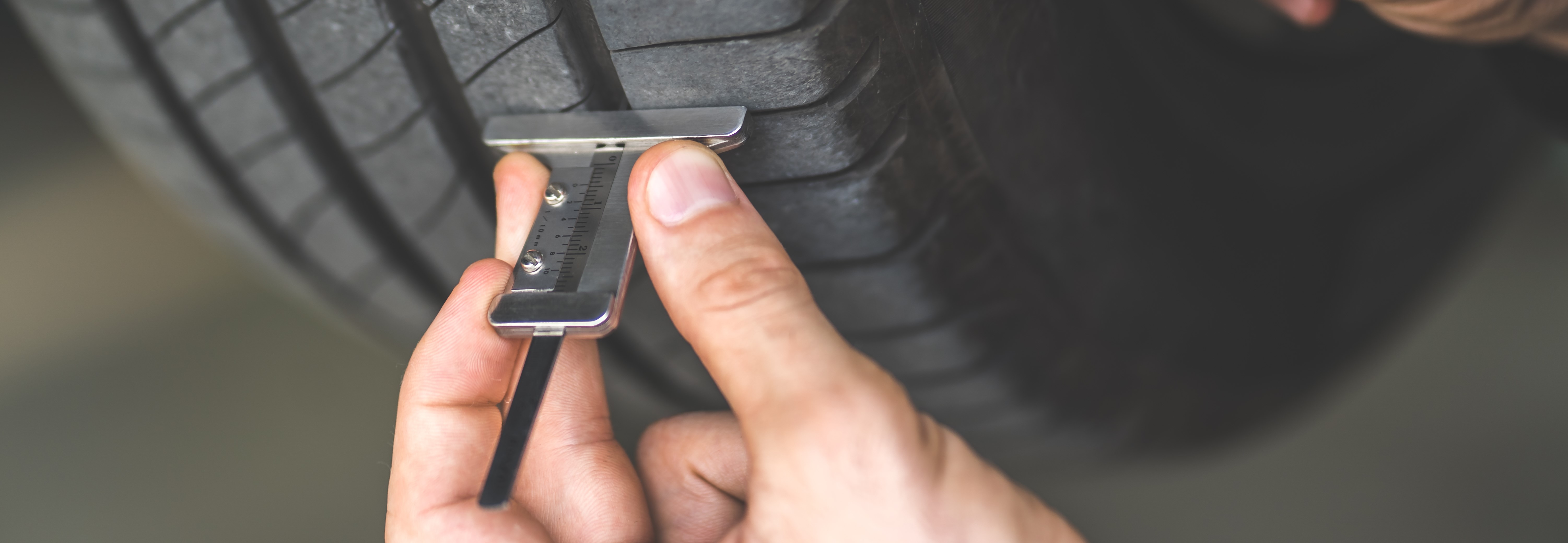Car tyres have to deliver top performance in everyday use. Whether in dry, wet, snowy or icy conditions, they provide top traction and keep the vehicle on the road – provided that the driver sticks to the rules of physics and traffic regulations. It is essential that the tyres not be worn out and have adequate remaining tread – only then do they provide the necessary grip.
Motorists must check the tread depth of their tyres regularly for their own safety and that of other road users. The law stipulates a minimum tread depth of 1.6 millimetres for summer tyres and a tread depth of at least 4 mm (radial tyres) or 5 mm (cross-ply tyres) for winter tyres. Experts highly recommend replacing summer tyres with new ones with a tread depth of 3 mm and winter tyres with 4 mm or more.

How to measure tread depth
Take a close look at your vehicle's tyres at regular intervals. You should pay particular attention to the small ridges that can be found in six places in the tyre tread as they function as wear indicators. To measure the tread depth, place a 20p coin in the grooves next to these ridges. The outer band of the coin serves as a good guide. If it is visible when you hold the coin in the middle of the summer tyre tread, you should change the tyres soon. If you are measuring the tread of winter tyres, it is best to look for new tyres such as cheap pirelli tyres as soon as possible. Another option is to push a folding ruler into the middle of the tread between the two tread blocks. You can then simply read off the current value from the upper edge of the tread. It also happens from time to time that the tread depth is measured during a police check. Here it is important to know that only the lowest measured value counts during such a check.
What tread depth do new tyres have?
How deep the tread of the new car’s tyres depends on the manufacturer and the tyre model. The depth of newly purchased winter tyres is about 9 mm, while summer tyres have a tread depth of 8 mm. However, certain tyres are also available that have a tread depth of 7 mm. Note that tyres may only be worn down to 1.6 millimetres. Therefore, the depth of the tread is also dependent on the service life of the car tyres. However, there are many other factors that you should definitely pay attention to, these include, for example:
- mileage
- driving style
- tyre pressure
- tyre manufacturer
- tyre width
- tread condition
- tread depth
- axle adjustment
- summer road temperatures

As you can see, tread depth is only a small aspect here. The manufacturer plays a very important role in tyre selection. Wear resistance plays a very important role in the purchase. If you want to be sure which tyre is the best when checking car tyres online offers and 185 65 r15 tyres prices because it is always advisable to compare and get some recommendations from your local mechanic.
The most important factors to remember about tread depth
The tread depth of new tyres is approximately of 8 mm.
- 1.6 millimetres is the minimum depth required by lave.
- Driving safety in adverse conditions is impacted by the depth, pattern, and the rubber composition of the tread of your tyres.
- On roads influenced by bad weather, braking power is reduced as tread depth decreases.
- Check your tyres at regular intervals.
- Slow down on wet and icy roads.
- Remember to replace your tyres as soon as they show signs of extensive wear and keep yourself and your passengers safe in all road conditions.
TOP products on the subject:










































